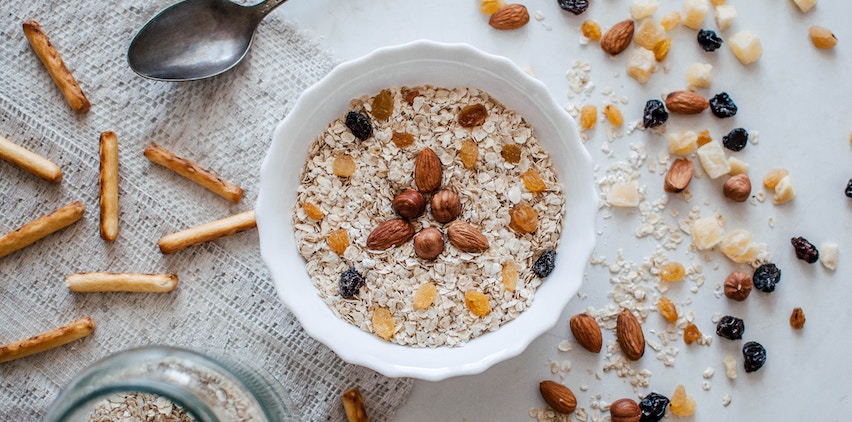

February 8, 2020 | Categories: Weight Loss & Nutrition
You know that your plant-based diet will consist of plenty of produce, lean protein, legumes, and healthy fats, but whole grains play a big part in helping you feel full and are essential to keep on the menu when you eat plant-based.
That’s because aside from whole grains satiety benefits – helping you feel fuller for longer– whole grains provide a host of health benefits. Studies have found that diets rich in whole grains have been linked to lower risks of cancer, diabetes, and heart disease. (Here’s how whole grains can help your ticker.)
When you’re reading food labels, make sure the first ingredient says whole wheat or whole grain, says Bonnie Taub-Dix, RD author of Read It Before You Eat It. “If you see ‘wheat’ as the first ingredient, that doesn’t mean the same thing. The wheat could be white, it could be stripped of nutrients, and it doesn’t mean whole wheat or whole grain.”
Whole grains help us meet our fiber needs and they’re are a good source of B vitamins, antioxidants, and minerals, says Taub-Dix. “A lot of people try to skip grains to lose weight, but that’s not a wise idea. They help you feel full, satisfied, and are an important part of your diet if you choose the right portions and healthy whole grains,” she says The U.S. Federal Drug Administration (FDA) recommends getting 25 grams of fiber daily on a 2,000-calorie diet.
Here are the best sources of whole grains to incorporate into your plant-based diet and how to eat them:
Swap your regular white pasta for a whole-grain variety to get more fiber and nutrients per serving. The whole grain pasta may have more texture and a bit of a “bite” to it that could take some getting used to but it’s a solid source of whole grains. Ease your family into it by swapping whole-grain noodles in vegetable lasagna, macaroni, and cheese dishes, and in pesto pasta. Chances are they may never notice the difference!
If you were following a somewhat healthy diet before going plant-based, you probably ate some of these whole grains before, and oatmeal was likely top of that list. This nutty hot breakfast item can be enjoyed so many ways with a variety of toppings and add-ins to make it taste fresh and different every day. “I like to make a giant pot of oatmeal early in the week,” says Taub-Dix. “Then throughout the week I take some out of the refrigerator container, put it in a bowl, add my almond butter, fruit, or whatever else, and heat it up in the microwave. This way, I don’t have to cook breakfast every day.” In fact, that same method of cooking a big batch and using it all week can be applied to all of these grains, saving you time and energy during the slog of Monday through Friday.
“Ancient grains sounds like a cool term and seems like something new, but they really are the grains our ancestors ate, and they’re really healthy for us,” says Taub-Dix. Grains like farro, amaranth, sorghum, and freekeh all fall into this category. The Whole Grains Council website can provide a guide on how to cook and serve each of these, as well as more information about ancient grains many health benefits.
A lot of people mistakenly call quinoa a grain, says Taub-Dix. “But it’s a seed derived from the mustard family and is sort of like a seed in grain’s clothing,” she says. Even though it’s not a whole grain, it’s still a gluten-free, healthy food that’s a good source of plant protein and fiber. Add it to your plant-based diet and enjoy it for any meal as a base for a quinoa bowl, a side dish, on top of a salad or even in a soup.
Read the full article on The Beet.
Leave a Reply